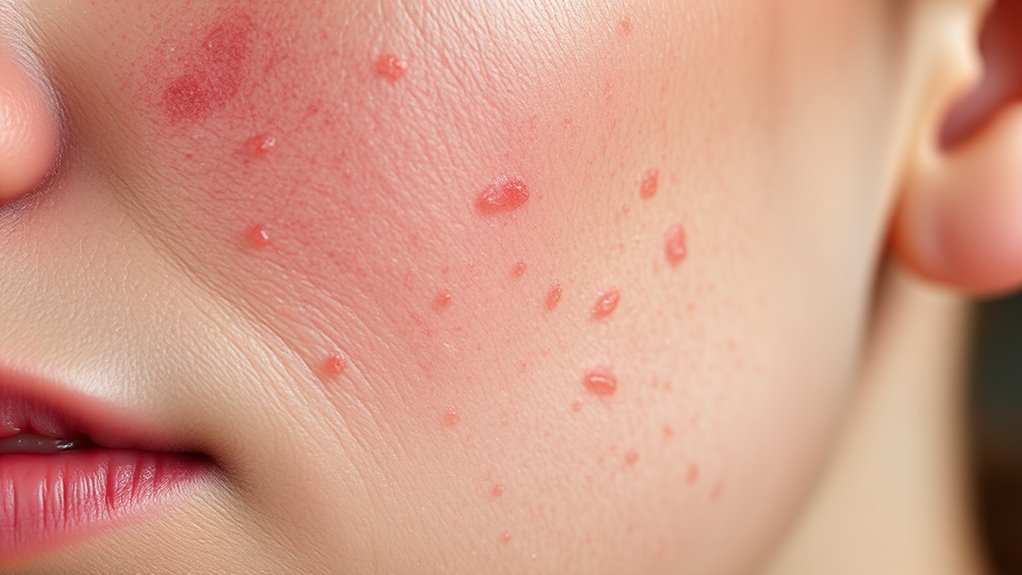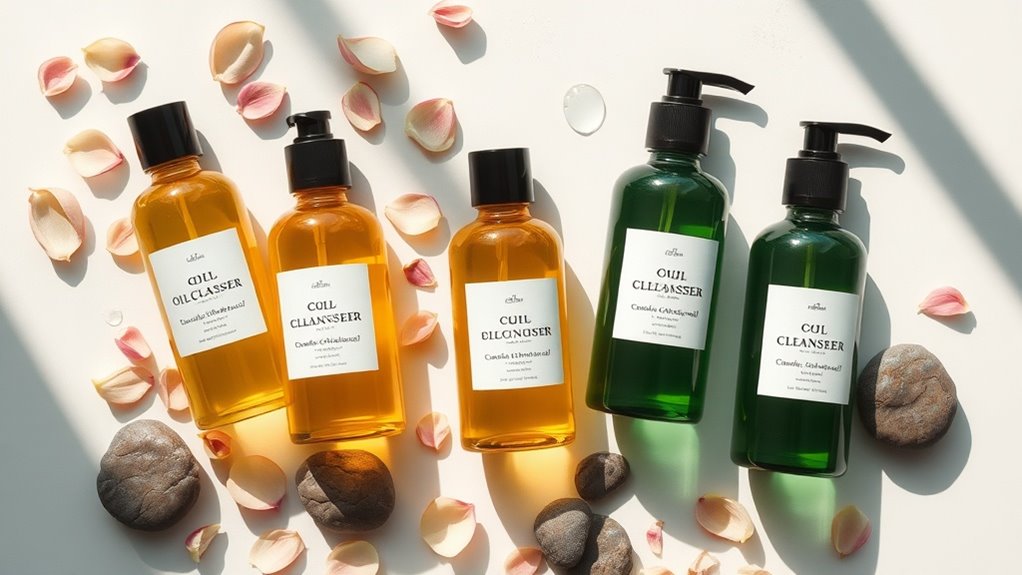Is Exfoliating Too Much Making Your Skin Worse.
Yes, you’re harming your skin by over-exfoliating, as clinical studies confirm. It strips away your protective barrier, depleting essential lipids, disrupting pH balance, and accelerating cellular breakdown, which leads to irritation, redness, dryness, and heightened sensitivity. This compromises long-term resilience and increases vulnerability to infections. To protect yourself, limit sessions to 1-2 times weekly and monitor for reactions. Ahead, you’ll uncover effective strategies for safe exfoliation and balanced routines.
The Dangers of Over-Exfoliating
Exfoliating too often can strip away your skin’s protective barrier, leaving it vulnerable to irritation and damage.
Over exfoliating depletes essential lipids and disrupts the pH balance, as clinical studies demonstrate, weakening your skin’s defense mechanisms.
You’ll accelerate cellular breakdown and inflammation with frequent sessions, experts warn, compromising long-term resilience and natural repair processes, according to dermatological research. Additionally, over-exfoliation risks can lead to increased sensitivity and redness, further complicating your skin’s recovery.
Signs Your Skin Is Reacting Poorly
If you’re over-exfoliating, your skin may exhibit redness as a clear sign of inflammation. You’ll also notice dryness that signals a weakened barrier, along with irritation that points to potential damage. Recognizing these symptoms early allows you to adjust your routine based on established dermatological guidelines. Additionally, persistent signs of over-exfoliation can lead to long-term skin issues if not addressed promptly.
Redness Appearance
One clear sign that your skin’s reacting poorly to over-exfoliation is persistent redness, which indicates inflammation and barrier damage.
This occurs when exfoliants strip away protective layers, triggering immune responses that exacerbate sensitivity.
Studies show such redness signals compromised epidermal integrity, potentially leading to long-term issues if you don’t reduce exfoliation frequency to allow recovery and barrier restoration.
Dryness Symptoms
Dryness often signals that over-exfoliation has compromised your skin’s barrier, leaving it dehydrated and prone to flaking.
This barrier loss accelerates moisture evaporation, causing a rough, scaly texture that feels tight and uncomfortable.
Research confirms excessive exfoliation depletes ceramides and natural moisturizing factors, intensifying dehydration.
You’ll observe these symptoms as your skin struggles to retain hydration, so monitor closely for recovery.
Irritation Signs
Irritation appears as persistent redness, stinging, or inflammation when you’ve over-exfoliated, signaling a disrupted skin barrier.
You may also feel itching or burning; studies show this results from damaged protective layers.
To prevent worsening, stop exfoliating, use barrier-repair creams, and seek professional advice if symptoms persist.
Evidence links over-exfoliation to increased sensitivity, as it compromises the acid mantle, heightening vulnerability.
How Over-Exfoliation Damages Skin Barriers
Over-exfoliation disrupts your skin’s barrier, leading to immediate breakdown effects that compromise its protective layer. You expose yourself to increased irritation and infection risks as this barrier fails to shield against environmental stressors. Additionally, you’ll experience moisture loss, which accelerates dehydration and impairs your skin’s natural recovery processes. Understanding the importance of skin barrier function is crucial to maintaining healthy skin and avoiding these damaging effects.
Barrier Breakdown Effects
Although regular exfoliation supports skin renewal, excessive practices erode the protective barrier, compromising its lipid structure and heightening susceptibility to moisture loss and external irritants.
This weakens your skin’s defenses, as studies confirm.
- Altered lipid layers: Over-exfoliation disrupts ceramides, reducing barrier integrity and increasing vulnerability.
- Heightened irritation: You’re more prone to allergens penetrating, per dermatological research.
- Impaired recovery: Evidence shows slowed cellular repair, leaving skin inflamed and sensitive.
Moisture Loss Risks
Excessive exfoliation disrupts your skin’s barrier, accelerating moisture evaporation and leaving it dehydrated.
By stripping away protective lipids, you’re increasing transepidermal water loss, as confirmed by dermatological studies.
This heightens vulnerability to irritants and allergens, leading to chronic dryness, inflammation, and potential microbial invasion, which can exacerbate conditions like eczema and accelerate aging if unchecked.
Effective Ways to Exfoliate Safely
Exfoliating your skin safely requires choosing methods that balance renewal with protection, such as gentle chemical peels or physical scrubs tailored to your skin type.
- Limit sessions to 1-2 times weekly, as research indicates overuse disrupts the skin barrier.
- Apply products evenly and gently, avoiding abrasion to minimize inflammation risks.
- Monitor for signs of irritation; studies confirm pausing allows recovery and maintains efficacy.
- Always consider common exfoliation mistakes to ensure you’re not compromising your skin’s health.
Choosing Exfoliants for Different Skin Types
Selecting the right exfoliant for your skin type guarantees effective renewal without causing damage.
For dry skin, choose AHAs like lactic acid; studies show they preserve hydration while removing dead cells.
If you’ve got oily skin, salicylic acid penetrates pores to control sebum, as clinical evidence confirms.
Sensitive skin benefits from gentle enzymes such as papain, minimizing irritation per dermatological research. Additionally, the optimal frequency of exfoliation can vary significantly based on individual skin characteristics and needs.
Building a Balanced Skin Care Routine
How do you construct a balanced skin care routine that integrates exfoliation without overwhelming your skin?
Begin by evaluating your skin type and limiting exfoliation frequency based on scientific evidence.
- Exfoliate sparingly: Dermatologists recommend 1-2 times weekly to avoid barrier damage, as studies show overuse leads to inflammation.
- Incorporate hydration: Always apply a moisturizer post-exfoliation to restore lipids, enhancing skin resilience per clinical trials.
- Monitor and adjust: Track your skin’s response weekly; if irritation occurs, reduce frequency to maintain ideal health.





